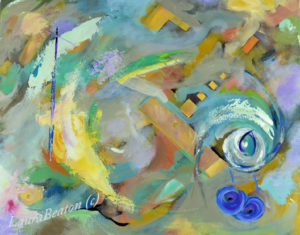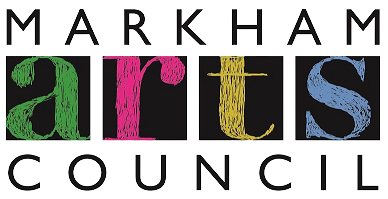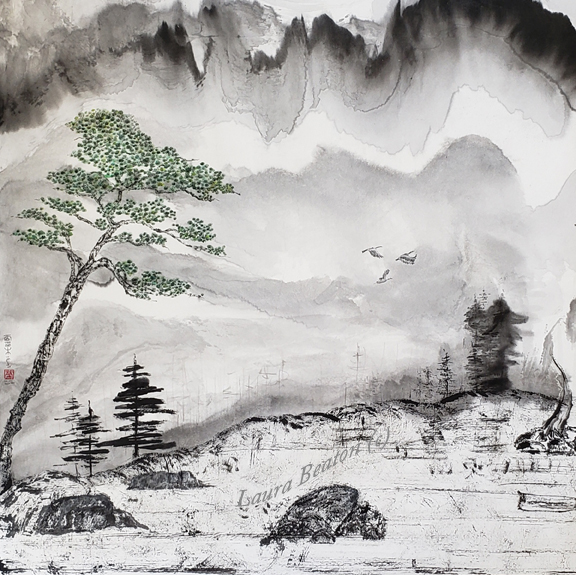By Nina Zhuang
Visual fine artist Laura Beaton’s first and defining memory of art was from her childhood. On a trip to Toronto’s Chinatown with her family, she found an antique tea wagon with Chinese brush painting. So many years later, she continues to revere and paint in this highly technical and serene style.
“It’s a lifelong learning journey,” says Beaton. “It’s an intellectual art form; it has a lot of substance.”
The Brampton-based artist was initially discouraged from pursuing her passion for art but remained laser-focused. She recalls paying for her Chinese brush painting classes and her first time there. “I was in for a surprise! It was a lot more technically difficult than I had imagined.”

Beaton is now beyond the learning curve and a recognized member of the Sumi-e Artists of Canada. Still, she continues to study with masters of Chinese brush painting in Canada and China and Sumi-e (Japanese ink painting) masters. She frequents workshops, some even taught in foreign languages, to refine her artistic skills and engage in different cultures.
The artist views some of her works as “Canadian-ized.” By employing the techniques from Chinese brush painting and Japanese ink painting, she creates calm landscapes that are unique to Canada. She emphasizes that her goal is not to take away from the art form but rather take inspiration and apply it to new ideas.
“I know a lot about Asian art; I have been treated by masters in an equal manner [as Asian artists]. I’ve developed a thick skin through all the criticism. I give credit where credit is due—the artwork is Chinese brush painting or Sumi-e, it just happens to [depict] Canada. [I try to] to help non-Asians…it’s interesting to open up conversations with people who only see the culture through one lens and go, ‘but have you thought of this?’ I try to open that door through my art. I wanted to be able to spread the message that art is art, and Chinese art has a lot of value just like any art form.”
Her artwork transcends borders, appearing in galleries, exhibitions, shows and collections in North America, Africa, and Asia. With her powerful platform, it is no surprise that art is also a tool for her to raise awareness and advocate for social change. Just last year, Beaton was commissioned by Hope 24/7, a support centre for victims of violence and sexual assault, to create a mixed-media (her second specialty) piece named Behind the Smile (2021). Her painting reflected the nuances of a sensitive topic through layers of colours and subtle symbols. People have spoken about how moving it is and how important it is for shedding light on violence and assault.
“Nowhere else can you be more political than through art, because a picture is worth a thousand words,” she says. “You don’t need to yell and scream to get your point across—that should be the last resort. I put my art out there and I let it speak for itself. I don’t tell [the audience] the story unless they ask.”

Her art speaks volumes for ongoing issues but is a tool for her self-expression as well. She brought up previous paintings created in a place of pain and darkness to talk about the catharsis that art has to offer and just how powerful it can be.
Beaton’s primary philosophy is to be positive and to be kind. She believes that art has the power to do so; it can make the world a better place by connecting people despite their differences and shifting society from tolerance to acceptance. One of her rituals is to always give positive names to her works, as thought-provoking, upsetting, or dark as they may be.
“There is always an opportunity for kindness,” she said. The world could use a whole lot more of it.
Check out Laura Beaton’s website to see more about her and her artwork, laurabeaton.com.


